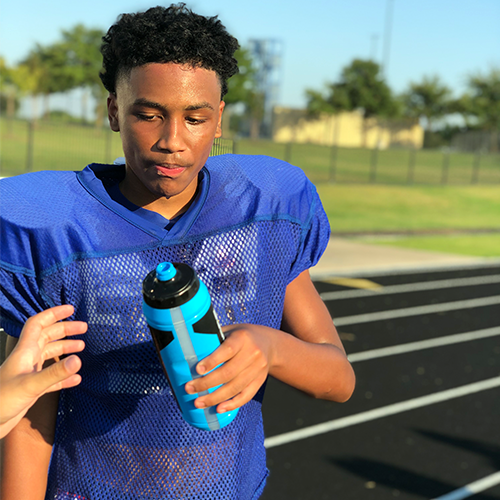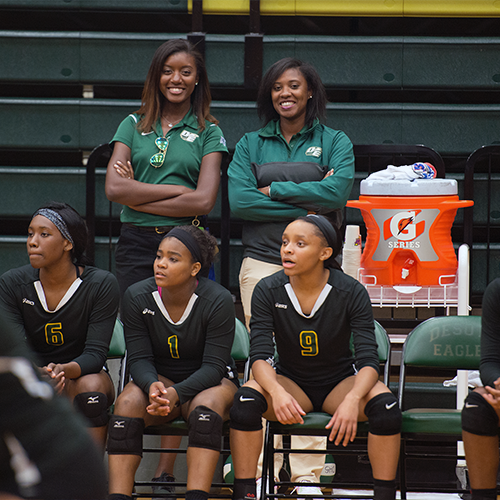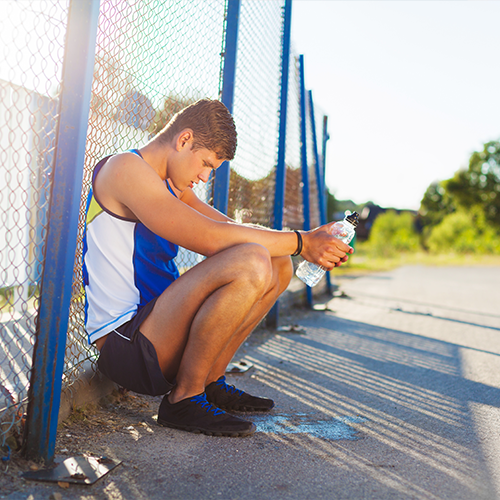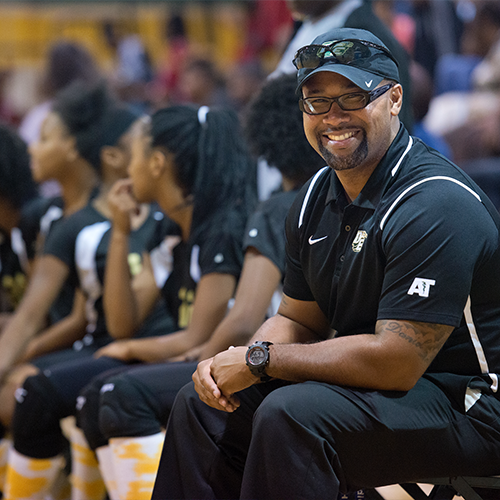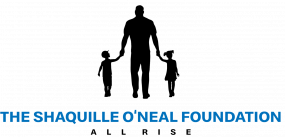Looking to cool down? CLICK HERE
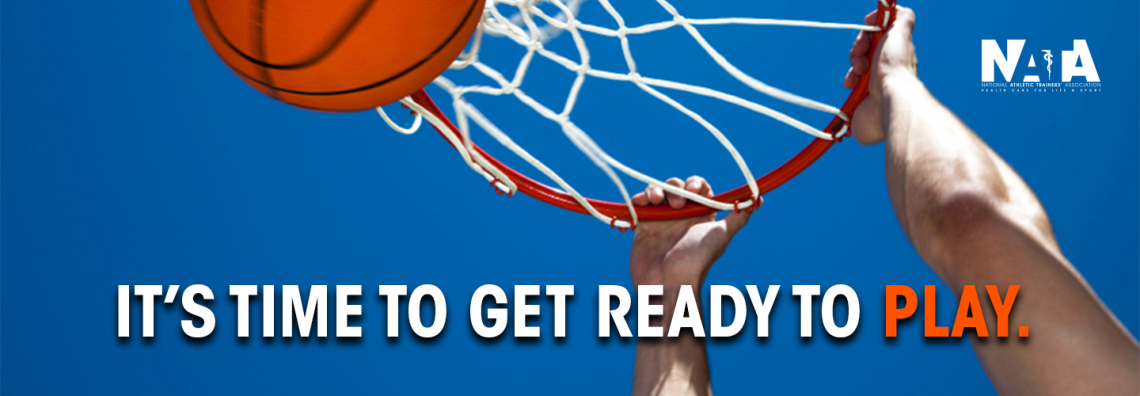
Ready to get started?
Warm Up and Stretching for Injury Prevention
Here are a few warm up drills and stretches to help get you get game ready. Properly warming up and stretching helps you perform better and reduces the chance for injury! Athletic trainer Madison M. demonstrates the warm-up activities below.
Overhead Squat to Calf Raises
Start at the baseline of the basketball court. Raise your arms over your head and perform a squat. Be sure your knees don’t go over your toes. Hold the squat for 2-3 seconds. Raise from the squat, drop your arms, and immediately go onto your tip toes. Hold for 2-3 seconds. Perform this 8-10 times.
Toy Soldier to Quad stretch
Start at the baseline of the basketball court. Keeping your left leg straight, kick it up in front of you halfway and try to touch your opposite arm’s fingertips. Repeat with the right leg. Perform this down to half court. Turn around at half court and head back to where you started. On the way back to baseline, kick your left leg behind you, grab your left ankle with your left hand to stretch the front of your leg (quad). Repeat this with your right leg and alternate down to the baseline. This is an excellent way to warm up and stretch your quads and hamstrings.
Knee Hugs
Start at the baseline. While walking toward half court, hug your left knee into your chest, then step and do the same thing with your right leg. Keep repeating to half court, turn around, and head back to the baseline. This is a great way to loosen up your glutes and hips.
Step Slides
Start at the baseline. Assume a low athletic position with your feet slightly wider than shoulder-width. Slowly step with your lead leg while keeping the body in a low position. You should stay low and keeping a minimum of six inches in distance between the feet upon returning to the original position. This is similar to a "defensive slide", but slower. Feel the stretch!
Sprint Warm Ups
Start at the baseline. From baseline to half court, start your sprint as a jog and slowly begin to increase your speed. About halfway to half court, explode to 100% effort. Run through half court, drop your butt, and intentionally slow yourself down. Perform this 1-3 times.
